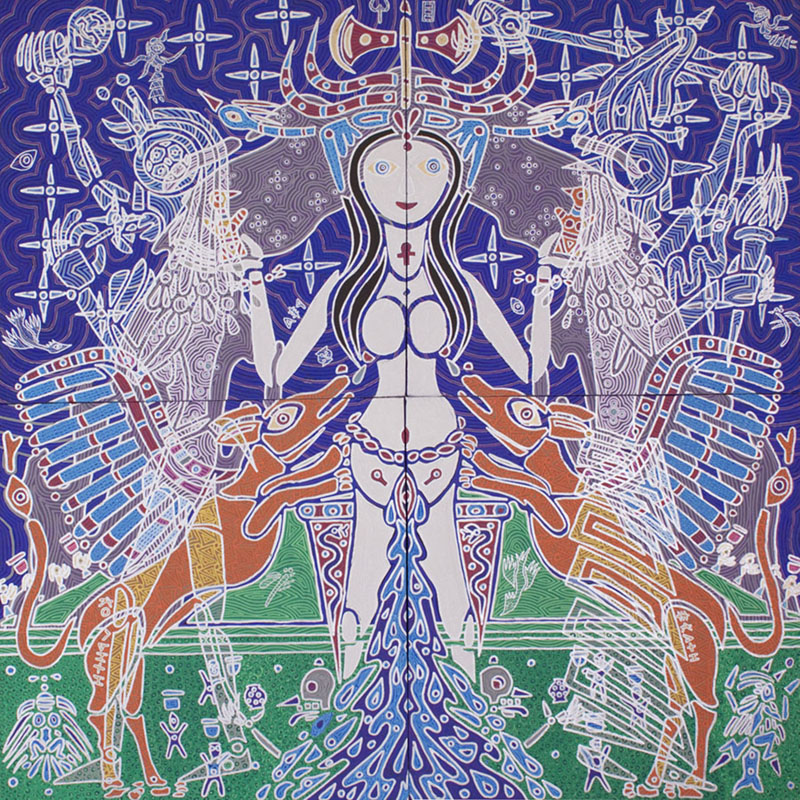:: 2011 :: 100cm x 100cm in four 50cm panels :: Acrylics, Inks & Markers on Canvas ::
At the heart of Eleusis, there rest two important experiences: the first is to identify with the Mother seeking to regain contact with her lost daughter, and thus to discover one's transcendent identity manifested in a female form. The second isto experience an epiphany, a visio beatifica of Persephone as Thea, emergent and reunified goddess. Both of these experiences return us to Minoan Crete and to an ancestral vision of Rhea, Mother of the Gods.
The art and archaeology of Bronze Age Crete is replete with images of epiphanies and visions of a deity descending from on high to greet the adorant. That the deity in question is nearly always female highlights the female-oriented focus of Minoan religion, and the contrast between this and later Greek male-centred religion is another aspect of the great wounding that Eleusis seeks to heal.
There can be no doubt that Rhea was Cretan, and likely central to the Minoan pantheon: her name is not Greek, but her depiction, at first between two griffins, and later between two lions upon pillars, demonstrates an iconographic continuity from the earliest Bronze Age sealstones into the very late Hellenistic era. As Mother of the Gods, her identity is central to the experience of Eleusis, and mythographer Karl Kerenyi considers apocryphal mentions of her as mother of Persephone to represent an older substrate of the myth in which she, as Queen of Heaven, descended to Earth in a manner similar to the Minoan epiphany, and there vented her grief.
Rhea is shown here in a form close to her Minoan depiction as Mistress of the Mountains and Mistress of Animals, with her attendant Kourete on the left and Hecate on the right, resonating with later images of both Artemis in her virginal state.











